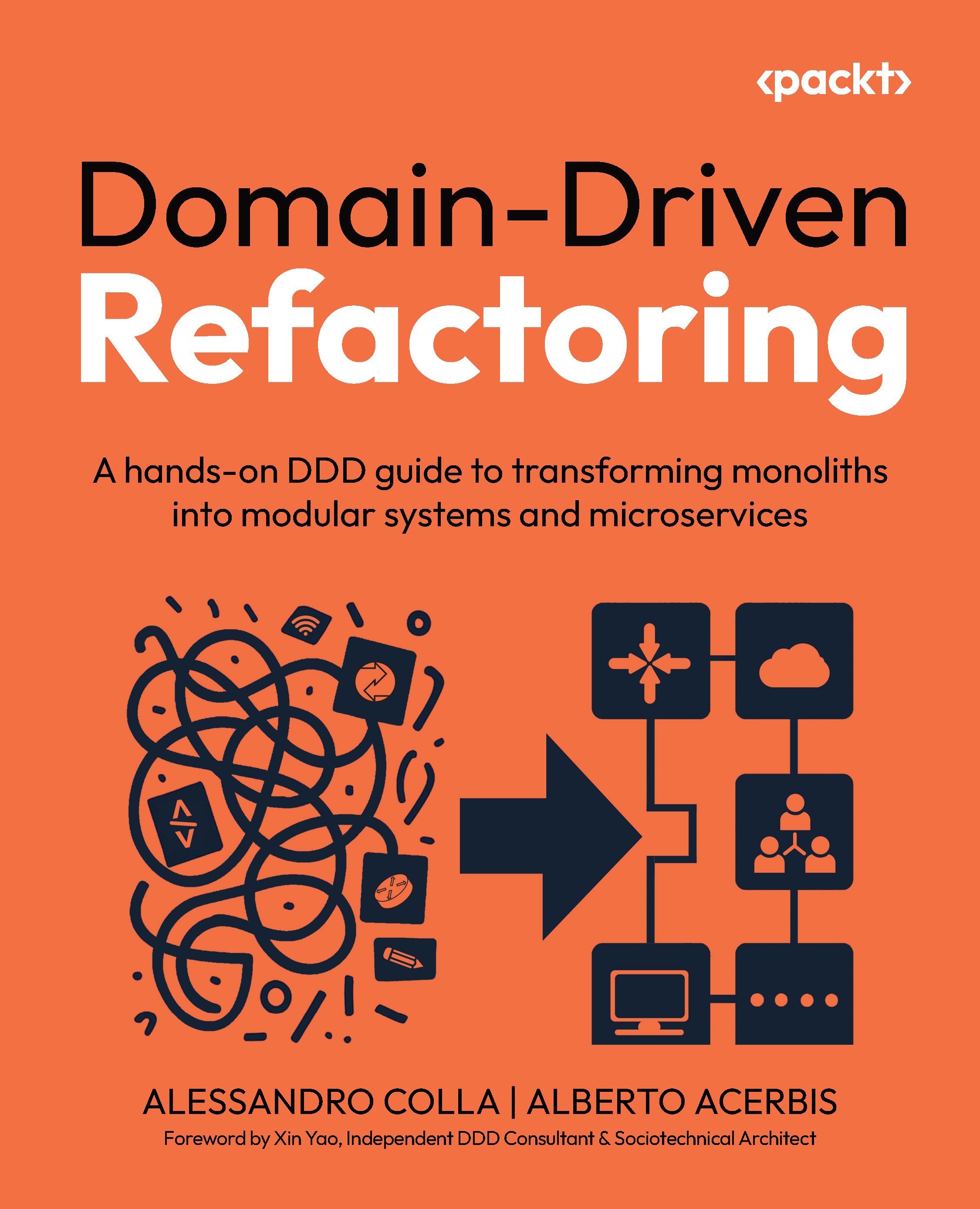Summary
This chapter has equipped you with a solid foundation in the principles and practices of refactoring within a DDD context. You learned that refactoring is not just about making code cleaner but also about aligning it more closely with the underlying business needs, enhancing its maintainability, and ensuring its resilience to future changes.
You learned about the importance of thoroughly analyzing your code base before taking any action, recognizing potential pitfalls, and selecting the appropriate tools for the job. The chapter highlighted the critical role of testing in the refactoring process, emphasizing how a robust suite of tests acts as a safety net, allowing you to make changes with confidence that your application’s integrity will be preserved.
Furthermore, you explored the application of key design principles, such as the SRP, OCP, DIP, and Strategy pattern. These principles will guide you in making incremental, manageable changes that lead to a cleaner...
































































